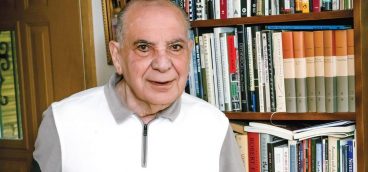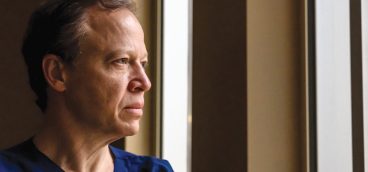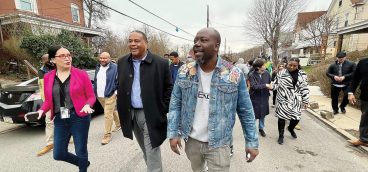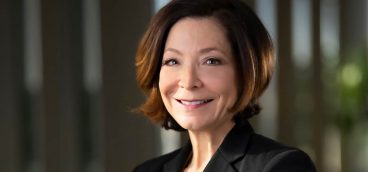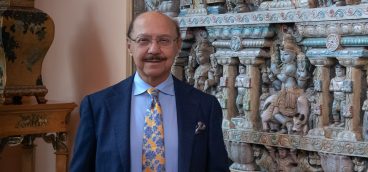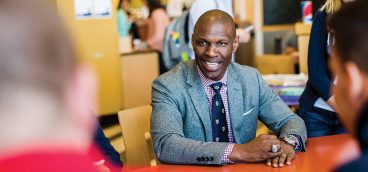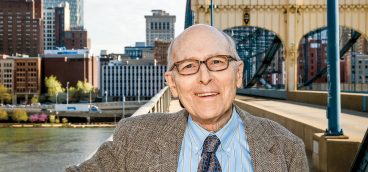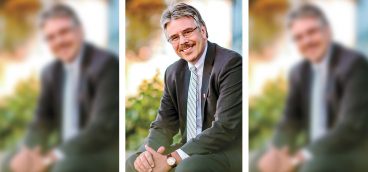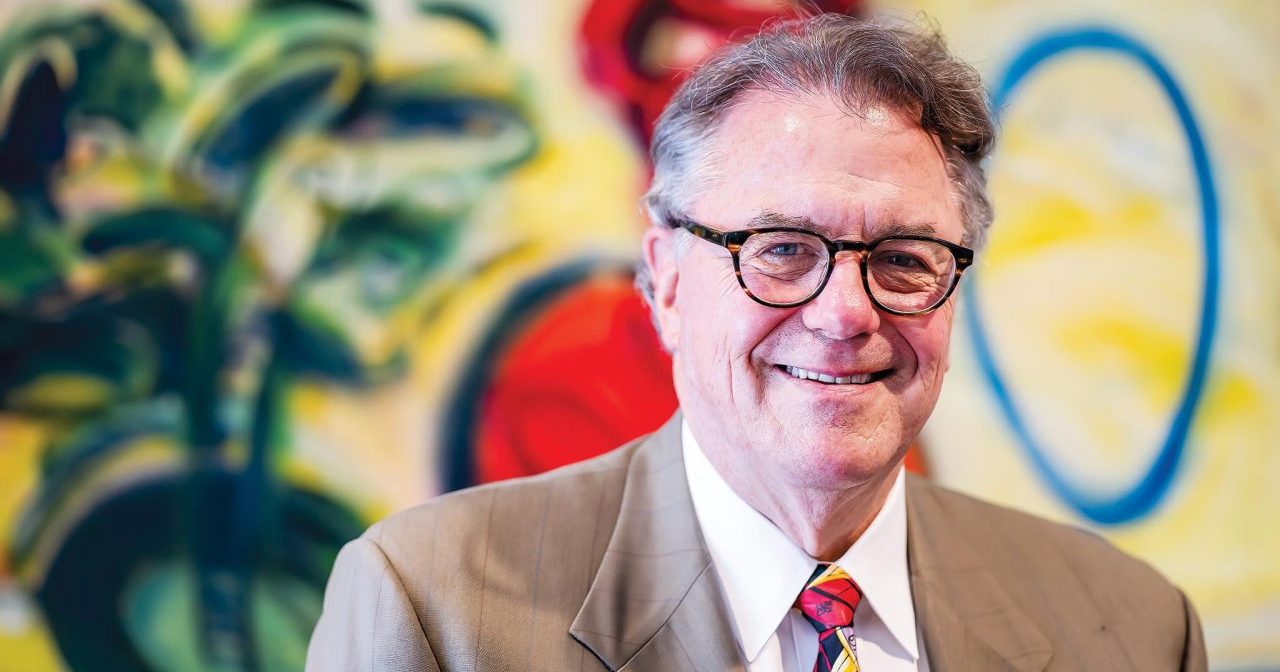
I was born in Louisiana, one of twin boys, in 1950, the product of my father’s second marriage. At the time, my mother was 33 years old and my dad was 61. My father’s father — my grandfather — was born in Dublin, Ireland, in 1843 and, as a baby, came to this country to escape the “potato famine.” He ended up fighting in the Civil War and didn’t start his family until age 43. So, ours is a family of “late bloomers.”
When my brother and I were still small, we lived in Louisiana and then moved to Virginia because my father, an architect, was working on the National Cathedral in Washington, D.C. Sadly, my mother died when we were just 8 and, then nearing 70, my father was left alone to raise us. Fortunately, my brother and I were able to move to Sarasota, Fla., to live with the oldest daughter from my father’s first marriage. That’s where we grew up and graduated from high school.
When it came time for college, I had boiled my options down to three schools. I was offered a “full ride” to the University of Florida. I was also considering Dartmouth and Duke. At one point, during the summer of my junior year, I was set to drive to Virginia to meet up with my father, so I thought, “Why not stop in North Carolina and see what Duke is like?” I fell in love with it, enrolled, and enjoyed my time there.
For 50 years, my father worked on the National Cathedral, which is a fine example of “high Gothic” architecture. And although he never went to college to earn a degree in his field, he had talent and learned the trade in New York, working as an apprentice for various architects. Under their tutelage, my father was able to hone his skills and build a career in a “self-made” fashion. Finally, in the mid-1950s, he was “credentialed” with the American Institute of Architects, a status of which he was always proud.
My father lived only 12 years beyond my mother’s death and worked on his drawing board up until a month before he died. So, at age 20, I was on my own and finished up at Duke a few years later with a degree in history. Perhaps our family’s circumstances taught both me and my brother, who became a successful family physician, to be self-reliant and resourceful “go-getters.”
Tim Parks, President and CEO of Life’sWork
- Life’sWork of Western PA, President & CEO (2017-present)
- Morgan, Lewis & Bockius LLP, Business Development Director (2001-2016)
- Pittsburgh Regional Alliance, President & CEO (1996- 2000)
- Pittsburgh High Technology Council, President & CEO (1984-1996)
- University of Pittsburgh, Master of Public Administration (1982)
- Carnegie Institute, Carnegie Museum of Natural History, Assistant Director (1978-1984)
- Indianapolis Museum of Art, Program Director (1976- 1978)
- National Endowment for the Humanities, Program Officer (1973-1976)
- Duke University, B.A., History (1972)
Fresh out of college, I went to Washington in 1972 in search of a job. It was ironic that I, a true “child of the ’60s,” wound up working for the federal government, albeit at an interesting and innovative agency that had been launched two years before my arrival — the National Endowment for the Humanities (NEH). I was assigned to work in the agency’s Museums and Historical Organizations Program, which, after three years, led me to an opportunity at the Indianapolis Museum of Art. The challenge was to launch an initiative that both the NEH and the National Endowment for the Arts had carved out: to create learning experiences for adults within a museum context.
The initiative started with two pilot programs: one at the Museum of Modern Art in New York City; the other at the Indianapolis Museum. So, what did I know about museums? At the time, nothing. But, at just 26, I decided to give it a whirl — and was successful. This led to a second, more national push for the “learning museum” concept, which precipitated my move, in 1978, to the Carnegie Institute in Pittsburgh.
When I first arrived in town, I went up to Mount Washington, walked out onto the platform and looked out to see the blazing open-hearth furnaces that made Pittsburgh the “Steel City.” It looked as if the entire region was on fire. I also saw what was then the city’s first “Renaissance,” with a host of corporate headquarters rising up to form the Pittsburgh skyline. “This is it,” I thought. “I’ve made the right decision.”
I worked at The Carnegie, in various capacities, for six years but still didn’t know much about the museum world. I did, however, learn how to deliver interesting programs. But as wonderful as the experience was, I felt that my long-term journey was not going to be in museums. So, I started looking around for opportunities and, by way of some connections, one was presented to me.
Shockingly, in the early 1980s, Pittsburgh all but collapsed because of the decline of the steel industry, which had been its mainstay economic structure for many decades. It was also a period during which Gulf Oil moved to Texas and Rockwell went off to … wherever. So, that concept of Pittsburgh being the city of corporate headquarters was in decline, too.
For people who lived and worked in the Pittsburgh region during that period, the contraction was devastating. The economic recession felt more like a depression, particularly if you looked down the river into the “valley of steel,” where unemployment then exceeded 15 percent. It soon became clear that the region would have to address its crisis in a bold way.
To tackle the problem, a group of leaders from the region’s universities was assembled by Penn’s Southwest Association, the organization charged with marketing the Pittsburgh region at that time, to identify the fledgling software, automation, and biomedical companies emerging from Carnegie Mellon University and the University of Pittsburgh, principally. A decision was made to try to marry the most promising student and professorial entrepreneurs with those of established small companies that had been spun-off from larger organizations, such as Westinghouse and Alcoa. These seasoned professionals would bring a level of experience that the software guys didn’t have. And of course, this group would need a leader, someone who would be willing to take a leap of faith to try to launch a regional “economic development organization” by pulling together local technology companies. Those businesses, it was determined, represented the future for the Pittsburgh region.
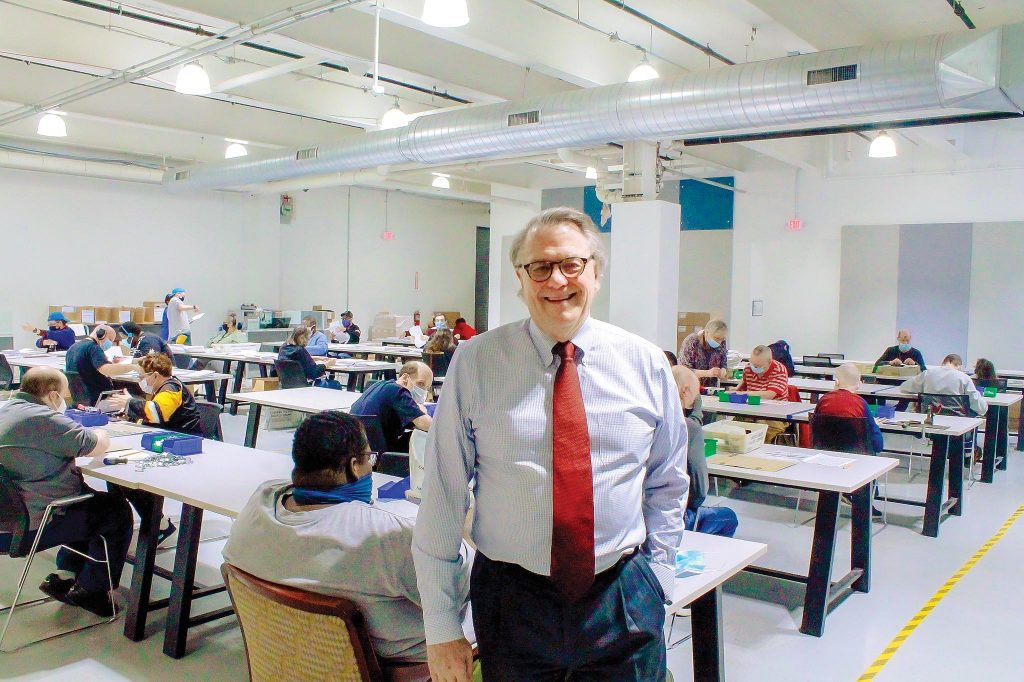
Tim Parks at Life’sWork’s South Side production facility, providing employment to hundreds of individuals with disabilities.
Like my father, I’ve never been properly “credentialed” for any position I’ve held. Virtually everything I’ve done has been something that was, in some respects, experimental or a bold leap of faith into the formation of an organization the likes of which had never previously existed. In every instance, I was charged with the responsibility to “make something happen.” Frankly, I was more naïve than many others who could have been considered for the job. I was young and was candid with the Penn’s Southwest group because I knew that people could see through B.S. I said, “I don’t know much about technology but I can organize people and lead a small organization. I’ve done it before.” Enter the “Pittsburgh High Technology Council.”
At the outset, the Tech Council boasted only 25 members and had only about $8,000 in the bank. Of course, there was the prospect of raising money, which they figured I would do. When you think about it, the organization was not unlike the entrepreneurial tech ventures we were designed to help support and grow. We developed an idea and had to go out and attract investors. To its credit, the philanthropic community of Pittsburgh decided to invest.
At the time of the Tech Council’s founding, the idea of building a concentration of technology companies into a specialized “trade association” existed in primarily three places. California had the Santa Clara Manufacturing Council (one day to be known as “Silicon Valley”). Massachusetts had the Massachusetts High-Tech Council. And New York had a group with a most interesting acronym: the Long Island Forum for Technology — LIFT. I remember thinking, “LIFT — what a great name. Maybe we need a name like that?” But then I thought further, “We already have an interesting name: the ‘Pittsburgh High Technology Council.’” In the context of the city’s past, the name seemed like an oxymoron. But it was just perfect.
Many Pittsburghers were skeptical, saying, “Pittsburgh and high tech? How does that compute?” And we met that skepticism head on, insisting that the Tech Council was a silver lining in an otherwise dark cloud. But even I had to be convinced that there was depth to what we had and that it wasn’t just smoke and mirrors.
As I got to know more about the technology strengths of Pittsburgh, I became a believer that what we had here was, indeed, real. My job was to find a way to maintain the aspirational aspects of what the technology industry could be for the region, while dealing with the reality that doing so would take time. The media often would ask, “So, when are we going to hit critical mass?” I would respond, “You’ll know it when we get there.” Now, one could argue that we have never reached our ultimate goal, but I think we’ve made tremendous progress.
In time, the idea of having a regional “technology council” proliferated throughout the country. Everybody wanted to replicate what we had done. But in Pittsburgh, in the mid-1990s, corporate and civic leadership were getting frustrated because there didn’t seem to be a coherent effort to “market” Pittsburgh. By way of the Allegheny Conference, regional leaders began asking: “How can we bring all the relevant entities together to sell Pittsburgh to the nation, and beyond?” As a result, the Pittsburgh Regional Alliance (PRA) was born and I was aggressively recruited for the director’s job. I reluctantly agreed to take it. I was skeptical about trying to push together five or six different organizations, which was the idea behind it. I knew all the players and was certain that each would want to preserve their proprietary interest in their own organizations. The challenge, once again, was to start an organization from scratch to lead this new effort.
Jumping into the PRA meant finding a way to build collaboration among various economic development entities, and it was a huge political challenge. I had to balance a lot of tension between the urban-center organizations that had been focused on the city of Pittsburgh, and the regional entities that surrounded it. For my entire tenure heading the PRA, I caught flak from political leaders but, quite frankly, more so from the economic development organizations. Nevertheless, we had some significant successes — recruiting the RAND Corporation and launching the Digital Greenhouse — and I feel gratified that the PRA took hold and still operates today. But after four years, I simply stepped away.
Beginning in 2001, and for the ensuing 16 years, I went to work for a national (now international) law firm, Morgan, Lewis & Bockius, as its “business development director.” The idea of a non-attorney holding this position was unconventional. Within the firm, I was older than most of the lawyers and brought a certain level of maturity. But since I wasn’t an attorney, it was difficult to gain the respect of not only the partners, who brought in the big bucks, but many of the firm’s junior lawyers, too.
In every law firm, there are the “rainmakers.” Selling comes easily and naturally to them. My challenge was, “How do I work with lawyers who hadn’t the intuitive sense of how to make a presentation and, in effect, to sell the law firm?” It can be difficult dealing with lawyers. But I can say, as a point of pride, that I ultimately became the business and transaction portion of Morgan Lewis: its “global director.”
How I survived in that world for so long, I don’t know, because I traveled more than 30 weeks per year. The firm had a strong office that was technology oriented. That’s what attracted me to them, and them to me. They must have thought, “Given his history, this guy knows something about the tech industry.” And, for my early years at the firm, that was my focus: helping them to make the case that would enable them to win technology clients. But, over time, the job exhausted me and I began to think about making a change.
Looking back, while still at the Pittsburgh High Technology Council, I recall being approached by an executive from Blue Cross/Blue Shield (BCBS), with whom we had recently negotiated a favorable health insurance deal. We leveraged the fact that the Tech Council’s member firms were young, and thus an attractive group. Soon after the successful negotiations, that executive from BCBS called me and said, “You got a good deal from us. Now you owe me one. Meet me at 1323 Forbes Ave.,” the location of what was then called the “Vocational Rehabilitation Center” (VRC). So, I went there and discovered an organization that was providing opportunities, self-esteem, and a level of independence to some of the region’s most vulnerable individuals — adults and youths with disabilities — who were seeking employment. It was not a big nonprofit, but it was having a powerful and direct impact on lives in a very real way.
Given my time with the Tech Council, I was an attractive candidate for the boards of regional organizations, mostly large, successful cultural institutions and business groups. I was perceived as a conduit to the new entrepreneurial wealth in Pittsburgh, a window into a part of the economy that was beginning to emerge. I served on many of those boards but I continued to think about, and was impressed by, that modest but effective nonprofit called the VRC. Ultimately, I was asked to join its board and, eventually, became its chair in 1999. From the start, I decided, “We must change the name of this organization.” I kept mixing up VRC with VCR, the latter of which everyone had in those days. During my time as board chair, we rechristened the organization “Life’sWork of Western PA” and it felt right.
I continued my work at the PRA and then at Morgan Lewis during my tenure as board chair of Life’sWork and was always supportive of the organization. But I wasn’t engaged too directly until the fall of 2016, when I read in a local newspaper about the departure of the organization’s CEO and the issues Life’sWork was facing. For me, it felt like a good opportunity. Eventually, a search group connected with me and, not long thereafter, I left Morgan Lewis and was named CEO of Life’sWork in 2017. And boy, was I in for a challenge. The organization had met its “existential moment.” But this time I would not have to manage a startup; the organization had been around for 95 years.
In many respects, my effort was a “rescue” because, when I was recruited, Life’sWork had hit a financial wall and was teetering. Its finances were a disaster. But, as indicated by the investment we received to launch and sustain the Tech Council, one of the things that makes Pittsburgh special is its philanthropic community. Regional foundations long had supported the VRC and they agreed to infuse the funds needed to stabilize Life’sWork. So, we brought in a new operating team and really turned things around. Today, Life’sWork is stable and financially healthy, and serving more people than ever.
In 2019, the board and I arrived at the conclusion that we really needed to get out of the “real estate business.” We maintained an enormous facility, 130,000 square feet, right across from what was then called the Palumbo Center, on Forbes Avenue, Uptown. There were some technical issues regarding the sale of the facility, but our team worked through them and, by way of some “financial engineering,” a “Hail Mary” pass was thrown — and it worked. We were able to put the building on the market and sell it to the right bidder — Duquesne University, which was looking over the horizon with aspirations for an osteopathic medical school (which is now being built). The facility met their needs. Their purchase met our needs. As a result of making liquid our major asset, suddenly we were able to wipe out our liabilities and we have no long-term liabilities to this day.
The building where I work today was where those blazing steel furnaces stood in 1978. Now it’s called River Park Commons. And even today, at 72, I step back sometimes and consider the marketing of Pittsburgh, trying to figure out how to package this place of ours. Amazingly, some of the original principles that guided us still hold true. We should not chase companies; we should chase people. We have to make Pittsburgh a destination, not only for tourists but for people coming here — from not just the nation but around the world. We must find ways to leverage Pittsburgh’s genuine strengths: the work ethic of its people and its deep “intellectual well,” mostly manifested by our universities. Looking forward, I am more optimistic about the future than are many Pittsburghers. We may not be Silicon Valley, but we’re making progress.



